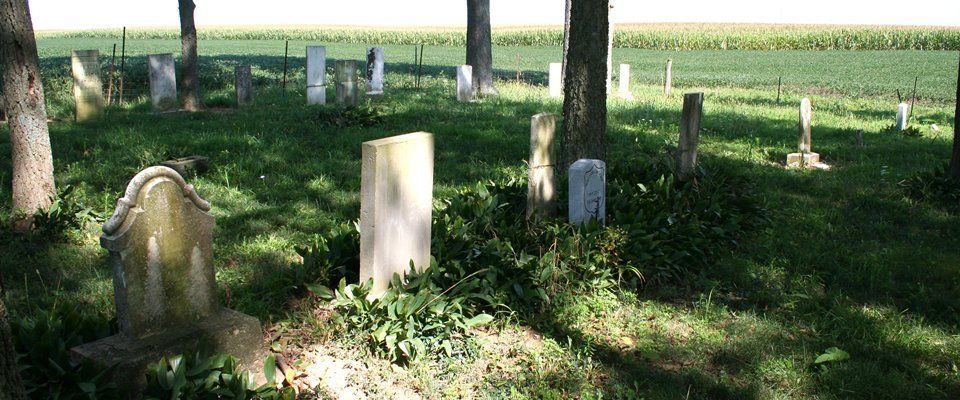Oxford Township Cemetery, Doty Settlement Cemetery - 6751 Brown Rd., Oxford OH
As Oxford Township in Butler County, Ohio was developing in the early to mid-1800s, a cluster of farmsteads near its northern border was designated as the Doty Settlement. This little community of pioneer settlers was given this identity because several of the families had the surname “Doty”. Within the boundaries of the settlement were a church, a cemetery, a school, a sawmill, a blacksmith shop, a furniture maker, and a distillery. Along with their farm crops and animals, the families possessed most of the essentials for survival.
In 1844, Job Smith deeded one acre of land to the First Congregation of the Christian Disciples (Campbellites) of the Doty Settlement for church and burial purposes. The property was located on lot one of section four on the west side of Brown Road and south of Doty Road. The earliest recorded burial was in 1843 and the last burial was in 1934. Evidence indicates that as many as 100 individuals may have been interred in the cemetery during that period. The History of Butler County of 1882 relates that a 24′ x 36′ frame meeting house had been erected on the site as a place of worship for the Campbellites. The cemetery was abandoned in the mid-20th century and the meeting house also disappeared.
In order to preserve the history of the site, the Oxford Museum Association, in partnership with the Oxford Township Trustees, initiated the process of determining ownership of the site and began restoration efforts in 2004. The cemetery is owned and cared for by Oxford Township.
Initially the property required significant clean-up after years of neglect and existing tombstones were inventoried and cleaned. Volunteers have spent numerous hours restoring damaged stones and resetting stones on original or reconstructed bases. John Curry, OMA board member, coordinated the project. Tom Stander, president of the Butler County Historical Society and member of the Oxford Museum Association, guided restoration work and surveyed the area with divining rods to locate unmarked graves and the location of the original meeting house. The meeting house location was confirmed by a subsequent ground penetrating radar survey conducted by Grumman Exploration, Inc. of Columbus, Ohio and an archeological dig led by Natural and Ethical Environmental Solutions of Cincinnati. The Ohio Historical Society awarded an Ohio Historical Marker that communicates the historical significance of the site.
The Restoration Movement
The Christian Church is a product of the restoration movement that was sweeping across the American frontier in the early 1800’s. The restoration groups stressed a return to a New Testament religion. One important group was associated with Thomas (right) and Alexander (left) Campbell (father and son) hence the term Campbellites; another was led by Barton Stone. After these two groups merged in 1832, they were called simply the Christian Church. We know them better as the Disciples of Christ. By the 1850’s, the Disciples of Christ had founded ninety churches in OH. Alexander Campbell was their best known leader.
John Curry, OMA board member, Tom Stander, past president of the Butler County Historical Society.


